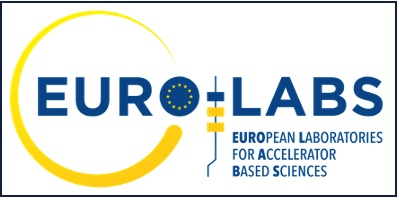Description
The slow neutron capture process is one of the main mechanisms of stellar nucleosynthesis for isotopes heavier than 56Fe, being of special importance in the region of the valley of stability.
The measurement of the neutron capture cross sections in time-of-flight facilities, such as n_TOF, provides nuclear data for isotopic ratios and stellar evolution models.
These models are evaluated in comparison to observational data, of which measurements of stardust silicon carbide (SiC) grains is the most precise.
Measurements of SiC are in disagreement with recent model predictions for the Nd isotopes, [1,2,3], consistently predicting a 15% higher neutron-capture cross section of 146Nd.
Moreover, the current reference data for 146Nd(n,γ), by Bao et al. [4], is based on a measurement of the unresolved resonance region (URR), between 3 and 225 keV, by Wisshak [5], and shows discrepancies with other measurements.
The recent experimental campaign, [6], at EAR2-n_TOF, [7], using a high sensitivity setup, [8], and a high-purity sample of 146Nd has the objective of measuring the resolved resonance region (RRR) of 146Nd up to 5 keV. Preliminary results from this campaign will be presented.
An outlook into a complementary campaign on the activation of 146Nd(n,γ) in a quasi-stellar spectra, yielding 147Nd with a suitable half-life (≈11d) to directly determine the MACS, will be included.
(1) S. Richter et al., Abstracts Lunar and Planetary Science Conf., 23, 1147, (1992)
(2) T. R. Ireland et al., Geochimica et Cosmochimica Acta 221, 200-218 (2018)
(3) Q.Z. Yin et al., The Astrophysical Journal, 647, 676–684 (2006)
(4) Z.Y. Bao et al., Atomic Data Nucl. Data Tables 76, 70 (2000)
(5) K. Wisshak et al., Phys. Rev. C 57, 391 (1998)
(6) J. Lerendegui-Marco et al., CERN-INTC-2023-055, INTC-P-671 (2024)
(7) C. Weiss, Nucl. Inst. Methods A, 799, 90-98 (2015)
(8) J. Lerendegui-Marco et al., EPJ Web Conf. 284, 01028 (2023)
| Work-package | WP2 - RIs for Nuclear Physics |
|---|---|
| Facility identifier | n_TOF |
